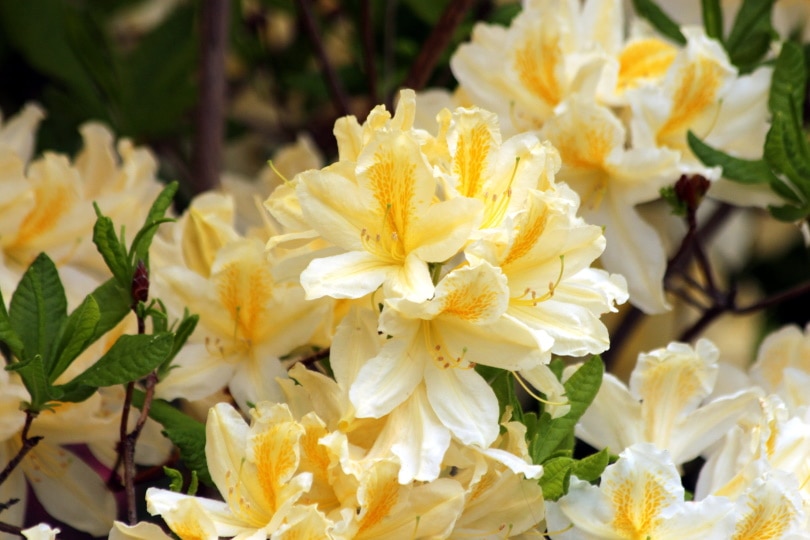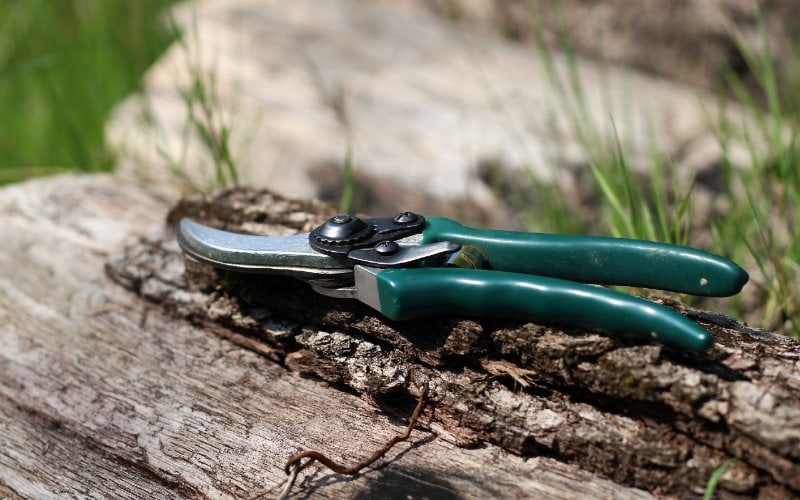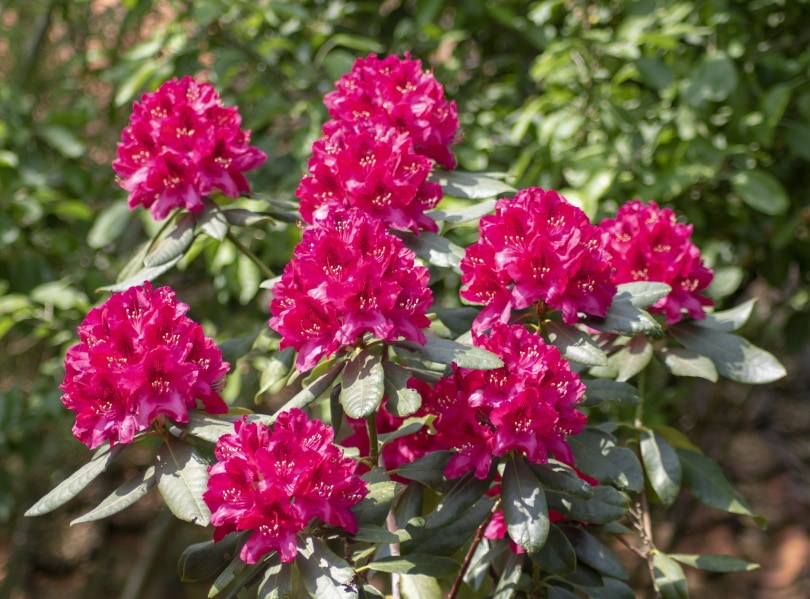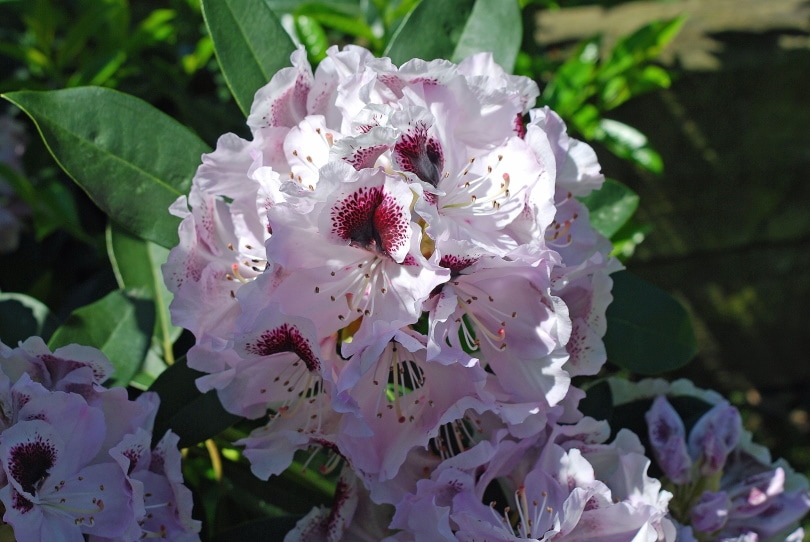6 Tips on How and When to Prune a Rhododendron
-
Pete Ortiz
- Last updated:

A rhododendron bush can add beauty to your landscape or be an eyesore. When a rhododendron is not manicured properly, it can make your yard look messy and dirty. Proper pruning of the plant will ensure a beautifully manicured plant with healthy blooms and a shape that will complement your home and garden.
Here are six tips on how and when to prune your rhododendron so you will enjoy it all year long.
 What Is Pruning?
What Is Pruning?
Pruning is removing unwanted parts of a plant to ensure the health and beauty of the plant. It includes removing buds, hardwood, softwood, sprouts, flowers, and even roots. There are no textbook routines, and it does not replace water, fertilizer, pest control, and proper planting for the plant to thrive.
The 6 Tips for Pruning a Rhododendron
1. Pruning to a Single Trunk

Are you interested in shaping your rhododendron into an arch? Maybe you are looking to create a tree-type plant with a single trunk. Large varieties of rhododendrons, like “Loderi” and “Naomi”, are excellent for achieving this effect. These plants can be pruned and trained to grow high with a single trunk. The beauty and interest of the plant can be seen all year round.
To train the plant to grow upward, delay heading back the plant. This will encourage the plant to grow upward and not outward. As it grows, it can be shaped by bending it in the shape or direction you want it to grow.
To get the look of a single trunk, leave a few of the low-lying branches on the trunk of the trees but be sure to cut away most of the low-growing branches.
2. Pruning to Restrict Growth
When choosing a rhododendron plant, be sure to get one that is appropriate for the space. The plant should be attractive and comfortable. For example, you don’t want to have a tall tree-like rhododendron blocking the view from your picture window.
Pruning a rhododendron to keep it looking beautiful in its space will require thinning the overgrown branches to ensure healthy flowers and leaves. Remove all the branches damaged from the winter, insects, extreme heat, and sun.
3. Pruning to Regenerate

If your rhododendron plant has lost its luster and looks overgrown, lacks blooms, and needs to be rejuvenated, it is best to do it in the early spring and over a period of two to three years. Although the plants may likely recover with one and done pruning, it is better to do it over time.
Prune the plant by cutting off the heavy branches and hidden blooms. Thinning the plant will allow the light in so new buds will form. Cut back the plant to allow new growths low on the trunk of the tree or shrub.
Cutting back the plant and removing the heavy dead branches will encourage new growth and vigor in the plant, which will result in continual blooms.
4. Creating Special Effects
Typically, rhododendrons are not easily trained for special effects. This plant responds well to being trained for an unbalanced effect, however. So, if you are looking to create a special look for your rhododendron, you can group a variety of textures and sizes or plant them with companion plants to achieve a particular look.
The plants can be pruned and shaped to expose the trunk on one side and the beautiful blooms and leaves on the other.
5. Pruning to Save the Rhododendron Plant

If you have a rhododendron plant that has been damaged or broken, it can bloom again. It is not uncommon for a plant that has been cut back to the stump to make a full recovery. It will take some time, however.
Rhododendron plants that have been struck by fire in the wild have been known to come back in a few years with full vigor.
6. Preparing a Rhododendron to be Transplanted
If you have a rhododendron plant that needs to be moved, do not fret. Moving the plant is not difficult. The best time to do so is before the new growths in early spring or fall. The roots of the plant should be pruned back with a shovel, leaving behind a portion of the soil and roots.
When placing the plant in the new space, it should be set high in loose soil surrounded by mulch. Cut off some foliage and prune the lower branches to compensate for removing some of the root ball.
If the plant has been ignored for some time, this may be a good opportunity to give it some much-needed attention.
 Why Prune a Rhododendron?
Why Prune a Rhododendron?
Plant owners prune plants for a variety of reasons. It can help to revitalize an old plant, propagate plants for sale, improve the quality and increase the quantity of the blooms or flowers, or create an arch or special look to the landscape.
Pruning does have its limits, however. It can be used to keep a young plant small and compact, but it cannot make a medium-sized bush grow big and tall. It can also be an excellent way to revitalize an overgrown and neglected plant but don’t expect miracles from the wood of an old plant.
When it comes to pruning your rhododendrons, use caution. If you are unsure, get advice from your local nursery.
When to Prune Your Rhododendrons

Typically, you can prune a rhododendron right after the plant is done blooming. The best time to prune them is in the early spring, however. This gives the new growth time to grow and mature.
Rhododendrons that have an excessive number of flowers should be pruned before they bloom. Reducing the flowers ensures the plant’s hardiness and improves the placement and quality of the remaining blooms.
Pruning your rhododendrons in the summer can lead to juicy sprouts being susceptible to injuries from aphids and reduce their ability to withstand the winter months. To ensure the quality and quantity of the next season’s growth, deadheading and pinching back should be done right after the flowers fade. Be careful not to damage any new growth, however.
To promote the growth of branches, remove all the dead shoots and leaf buds during the summer and through the fall and winter.
How to Begin the Pruning Process
Crawling under the rhododendron plant is the best way to see what needs to be done to the plant. Rhododendrons that have been neglected for a long time will need to have the dead and tangled branches removed first. Once they are gone, remove any branches that are dead or weak. The excess branches should be removed to allow the healthy ones to grow.
If you are not creating a layered plant, cut off any drooping branches. Also, remove the thin shoots from the trunk of the bush. Be sure to make clean cuts, and do not leave any stubs on the trunk or main branches.
Lastly, clean up the plant by thinning out the small branches on the outer part of the rhododendron.
 Final Thoughts
Final Thoughts
Although rhododendrons are strong and resilient, carefully pruning them will ensure that you have a healthy and thriving plant for years to come. Whether you want to move the plant or create a special effect, doing it properly is essential for the quantity and quality of the flowers. The time and attention you give to pruning and caring for the plant will be evident in its appearance, and it will also ensure the life of the plant.
Featured Image Credit: Piqsels
Contents

 What Is Pruning?
What Is Pruning?
 Why Prune a Rhododendron?
Why Prune a Rhododendron?